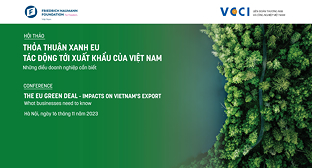India, EU at crossroads
05/05/2008 12:00
Common values can play catalyst for compatible views
Rising from the ashes of two World Wars and expanding to include 27 Member States with more in the waiting, the European Union today is a bastion of peace, harmony and prosperity. On the other hand,
At The Hague Summit 2004, India and the EU agreed to forge a “Strategic Partnership,” which was a result of an earlier EU publication in December 2003 when the EU published its first-ever security strategy identifying India along with the US, Russia, Japan, China and Canada, as the ones with whom it should develop a “Strategic Partnership,” in order to build an “effective multilateral system leading to a fairer, safer and more United World.”
For example, the EU expected
Political ties can not go far without financial bonds and a look at the trade figures from recent past show that its time to inject much needed momentum into an uninspiring trade relationship. The trade statistics shifted a gear from a meagre less than five billion Euro in 1980 to a respectable more than 45 billion Euro in 2006. Although trade with the EU is 20 percent of
In the context of the ongoing negotiations in the EU-India Free Trade Agreement, there are some stumbling blocks that need to be addressed on both sides. According to reliable sources, the major hurdle is in the fields of agriculture which is a protected sector in the EU which earmarks 40 percent of its total budget to this sector where there are subsidies galore.
The EU has, in recent times, accepted the fact that Indian import tariffs have been substantially reduced but it complains they are still high by international standards. The EU calls it a “complex and non-transparent” system as it points at additional duties, taxes, and charges that are levied on top of the basic customs duties.
Pointing to the “non-tariff” barriers, the EU lists quantitative restrictions, mandatory testing, import licensing, certification for a large number of products and a complicated procedural modus operandi as the major speed breakers for a smooth trade relationship. With Indians finding the EU institutions bewildering and complex, India has its own set of complaints, foremost being in recent times the frequent use of anti-dumping duties on its exports including footwear.
The OECD (Organization for Economic Cooperation and Development) in a recent report highlighted the need for
Climate Change is another major sticking factor in the relationship equation, as India negates EU calls for a stricter binding commitments to reduce greenhouse gas emission, while Delhi argues that as a developing country it can not be expected to slow down its pace of industrialisation.
The EU has allotted 470 million Euro between 2007-2013 to tackle cooperation in the energy sector and environmental concerns while making efforts to reach its Millennium Development Goals.
The global disparity between the South and the North seems to be playing a pivotal role here also.
With the present stalemate at the Doha Round consultations, it is a miracle of sorts that can revive the Doha Round to the fullest potential as it’s already surviving on life-support devices of optimistic political statements. The EU and India are together in many global projects, like the European Satellite project “Galileo” which got a goahead last week from the European Parliament, International Thermonuclear Experimental Reactor (ITER) to produce electricity using nuclear fusion, Indian space agency ISRO with its European counterpart ESA.
With the EU-India Free Trade Agreement in the pipeline along with other fields of cooperation being explored, both India and the EU are ready for taking a qualitative leap forward in relations, but the political leaderships on both sides have to transform all the talk of shared values of democracy, diversity and multilateralism into concrete pragmatic actions, thus making an effective and cohesive EU-India Strategic Partnership out of the present patchwork of sectoral cooperation.
Author: Tejinder Singh
Source: www.neurope.eu
Các tin khác
- Textile and garment exports recovered positively (19/04/2024)
- Foreign steel imported en masse, manufacturers call for protection (19/04/2024)
- US targets Chinese steel with 'overcapacity' fallacy amid escalating trade tensions; move casts great uncertainty on stabilizing bilateral ties (19/04/2024)
- Thailand is considering implementing protective tariffs on imports from China (19/04/2024)
- Fruit and vegetable exports to RoK and Thailand surge (19/04/2024)
 Home
Home
 About Us
About Us




















